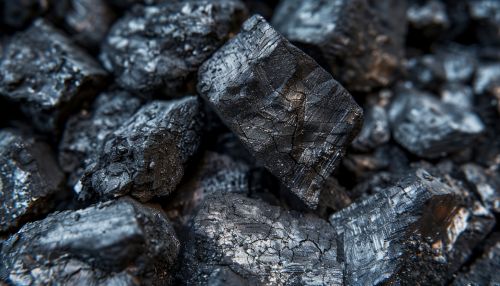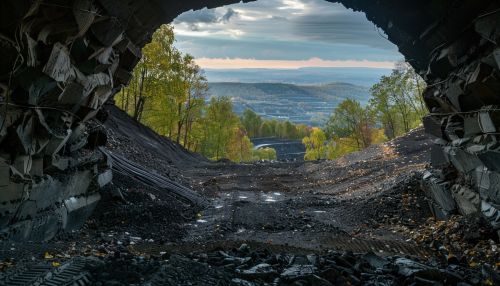Coal
Overview
Coal is a black or brownish-black sedimentary rock that is primarily composed of carbon, along with various other elements such as hydrogen, sulfur, oxygen, and nitrogen. It is formed from the remains of plants that lived and died about 100 to 400 million years ago when parts of the earth were covered with huge swampy forests. Coal is classified as a nonrenewable energy source because it takes millions of years to form.


Formation
The formation of coal takes place over millions of years through a process known as coalification. This process involves the decomposition of plant material into peat, which is then converted into lignite, then sub-bituminous coal, bituminous coal, and finally anthracite. This involves the removal of water, carbon dioxide and methane, and increases in carbon content.
Types of Coal
Coal is classified into four main types, or ranks: anthracite, bituminous, sub-bituminous, and lignite. The ranking depends on the types and amounts of carbon the coal contains and on the amount of heat energy the coal can produce.
Anthracite
Anthracite is the highest rank of coal. It is a hard, brittle, and black lustrous coal, often referred to as hard coal, containing a high percentage of fixed carbon and a low percentage of volatile matter.
Bituminous
Bituminous coal is a dense sedimentary rock, usually black but sometimes dark brown, often with well-defined bands of bright and dull material. It is used primarily as fuel in electricity power generation, with substantial quantities also used for heat and power applications in manufacturing and to make coke.
Sub-Bituminous
Sub-bituminous coal is black in color and dull (not shiny), and has a higher heating value than lignite. Sub-bituminous coal is used as fuel for steam-electric power generation.
Lignite
Lignite is the lowest rank of coal and is a peat that has been transformed into a rock, and is brownish-black in color. It has a high moisture and low heat content and is typically used in electricity generation.
Uses of Coal
Coal has many important uses worldwide. The most significant uses of coal are in electricity generation, steel production, cement manufacturing and as a liquid fuel.
Electricity Generation
Coal is primarily used as a solid fuel to produce electricity and heat through combustion. World coal consumption was about 7.25 billion tonnes in 2010 (around 7.99 billion short tons) and is expected to increase 48% to 9.05 billion tonnes (9.98 billion short tons) by 2030.
Steel Production
Coke, which is derived from coal, is used to create the high temperatures needed in the steel-making process. Coal is converted into coke by heating the coal in a coke oven after removing impurities.
Cement Manufacturing
Coal is used as an energy source in cement production. Large amounts of energy are required to produce cement. Kilns usually burn coal in the form of powder and consume around 450g of coal for about 900g of cement produced.
Liquid Fuel
Coal can be converted to liquid fuels like gasoline or diesel by several methods. The Fischer-Tropsch process, coal liquefaction, and direct coal liquefaction are the methods in use.
Environmental Impact
The burning of coal, like the burning of all fossil fuels (oil and natural gas included), releases large quantities of carbon dioxide (CO2) into the atmosphere and is a major driver of global warming. A potent greenhouse gas, CO2 traps heat from the sun's rays within the earth's atmosphere, contributing to the greenhouse effect and global warming.


